So you've found the perfect place to shoot. It has the right aesthetic for your films tone and its functionality matches your script perfectly, but there are some things that you'll want to bear in mind before you start booking your cast and crew.
Once you've found your location, we talked about some ways to do that in a previous blog, you'll need to make sure that it suits your needs and that its a viable venue to set your movie. Not all locations are created equal and there are 5 things that you need to look at to make sure that where you want to shoot works for you.
I created something called 'THE WAPAH!! CHECK LIST', which are 5 things that you should look at when you are scouting for places to ideally shoot your next film.
Once you've found your location, we talked about some ways to do that in a previous blog, you'll need to make sure that it suits your needs and that its a viable venue to set your movie. Not all locations are created equal and there are 5 things that you need to look at to make sure that where you want to shoot works for you.
I created something called 'THE WAPAH!! CHECK LIST', which are 5 things that you should look at when you are scouting for places to ideally shoot your next film.
1. water
One of the first things I do is check that there is running water on location. Especially if you are going to spend any length of time there. It seems like something that wouldn't be that important, but if you don't have access to running water, trust me, you notice fast. This could just be a bathroom or kitchen and if you are shooting in a standard suburban house or commercial facility then, chances are, that they'll be water for bathrooms/washing/cleaning up/doing hair and makeup/special effects etc.
However when you're out shooting in warehouses, old buildings and abandoned places (as well as out in nature) Water starts to become harder to come by. This is where you need to figure out how much water you need to bring yourself, for people and for functionality. Drinking water should always be brought anyway (don't EVER let your cast and crew drink from taps in abandoned or old buildings), but you should be aware of how much you need and what you need it for.
On Slasher House and Legacy of Thorn, we shot in old, non functioning government buildings. They had electricity and some running water (only cold), but there was no water flow to the showers in either case. This was a problem when most people returned from shooting each evening covered in dirt and sticky blood. Obviously before we got there we had to figure out a solution to that. Which brings us to...
However when you're out shooting in warehouses, old buildings and abandoned places (as well as out in nature) Water starts to become harder to come by. This is where you need to figure out how much water you need to bring yourself, for people and for functionality. Drinking water should always be brought anyway (don't EVER let your cast and crew drink from taps in abandoned or old buildings), but you should be aware of how much you need and what you need it for.
On Slasher House and Legacy of Thorn, we shot in old, non functioning government buildings. They had electricity and some running water (only cold), but there was no water flow to the showers in either case. This was a problem when most people returned from shooting each evening covered in dirt and sticky blood. Obviously before we got there we had to figure out a solution to that. Which brings us to...
2. amenities
Based on how much access and the type of access we have to water and facilities, I then look at the local amenities to figure out just how far we'll have to travel to do things like shower/use the bathroom/get refreshments. This should, again, give you a good idea of what you need to bring in terms of equipment, food, water and what you can have access to on the day. What shops are available locally? How far is it to get to them?
The distance between your set and your amenities can make a huge difference. If you're working with a small crew and suddenly someone you NEED has to take a 90 minute round trip to pick up food or take an actor to the bathroom or what have you then you are gonna see a lot of downtime when you're not shooting and this is when thing start to overrun and cause problems. Also, if you've every met an actor who can't shower for a couple of days, then you'll understand how important it is to find somewhere for them to wash regularly.
On Legacy of Thorn, the school we shot in (and lived in) for 14 days, had electricity and running cold water, but then water only ran in the admin building and not to the showers down in the sports block. We bought solar showers as it was the height of summer, but they were less than successful, luckily we had scoped out the leisure centre before hand, about 20 minutes down the road and told them what we were up to, they agreed to let us use their showers and we scheduled in time in the day for actors (and then crew) to go and get washed if they needed.
The distance between your set and your amenities can make a huge difference. If you're working with a small crew and suddenly someone you NEED has to take a 90 minute round trip to pick up food or take an actor to the bathroom or what have you then you are gonna see a lot of downtime when you're not shooting and this is when thing start to overrun and cause problems. Also, if you've every met an actor who can't shower for a couple of days, then you'll understand how important it is to find somewhere for them to wash regularly.
On Legacy of Thorn, the school we shot in (and lived in) for 14 days, had electricity and running cold water, but then water only ran in the admin building and not to the showers down in the sports block. We bought solar showers as it was the height of summer, but they were less than successful, luckily we had scoped out the leisure centre before hand, about 20 minutes down the road and told them what we were up to, they agreed to let us use their showers and we scheduled in time in the day for actors (and then crew) to go and get washed if they needed.
3. power
Obviously if you are shooting a movie, you are probably gonna need power. Although not in all instances, which is why its actually 3rd on the list (that and it helps me spell WAPAH by being here). After checking our water supply and amenities I look to see how much power (if any we have). How many power points are there? Are the functional? Are they wired safely? How many extensions will we need to set up how many lights? This way I can plan exactly what I need to pack in terms of power/lights and if we need a generator or not.
If we're shooting outdoors, we use rechargeable led lights and scout with that in mind to try and find places with decent natural light already, If we're shooting in the day, this becomes less of an issue obviously and its entirely possible to shoot with natural light and some reflectors. If you're shooting in doors at night you'll probably need power. This is also useful for things like recharging gear, batteries, running footage off the camera and making cups of tea (The most important use of power on a British set).
On Slasher House 2, we needed to shoot in a graveyard, but getting power out there was a problem that we found impossible to solve. To try and regain control over lighting, we asked a lovely friend of ours who had helped us out on a previous film, if we could use there expansive garden to build a graveyard and run power from the house. The only problem is that they only had one outlet we could run power from, we thought it would be enough at a push and very quickly we started to find that we would lose power to the 3000 watts worth of lights we were running. This meant having to pause filming every 20 minutes of so in the pitch black on a -1 December evening. Make sure you have enough outlets to run your equipment properly.
If we're shooting outdoors, we use rechargeable led lights and scout with that in mind to try and find places with decent natural light already, If we're shooting in the day, this becomes less of an issue obviously and its entirely possible to shoot with natural light and some reflectors. If you're shooting in doors at night you'll probably need power. This is also useful for things like recharging gear, batteries, running footage off the camera and making cups of tea (The most important use of power on a British set).
On Slasher House 2, we needed to shoot in a graveyard, but getting power out there was a problem that we found impossible to solve. To try and regain control over lighting, we asked a lovely friend of ours who had helped us out on a previous film, if we could use there expansive garden to build a graveyard and run power from the house. The only problem is that they only had one outlet we could run power from, we thought it would be enough at a push and very quickly we started to find that we would lose power to the 3000 watts worth of lights we were running. This meant having to pause filming every 20 minutes of so in the pitch black on a -1 December evening. Make sure you have enough outlets to run your equipment properly.
4. access
What kind of access you have to your location is important and it will ultimately determine if the location is right for your shoot. Can you only get in to the location at certain times? Can you access it around the clock? Is it a 6 hour drive away from base camp? Is it near any civilisation at all? Can you drive to it or do you have walk on foot? There is a huge list of things that will make getting to a location a problem and you sometimes have to weight up if that location is worth using if its too difficult to get to.
You also want to be aware about how long you have at the location, if you need to work around a business then you will probably be shooting after hours, if you need nightfall then you'll have to check that you have access at night. Its worth checking if you can house your cast and crew there to. The easiest shoots i've had are the ones where we lived on set (or in the same complex) as there wasn't travel to worry about or driving back and forth from location every day. Plus it makes its easier for everyone to bond.
On Slasher House 2, we had our main location around the clock, which was fine as we needed to shoot at night because of the locations huge factory windows, we just couldn't cover them. This was fine as we could get in anytime we wanted, The only stipulation was that if we didn't leave by 10 when the gates closed, then we had to stay until 5 in the morning when the gates opened. This led to either having to rush through what we were doing as soon as it got dark, or finishing in the small hours in the cold and then having wait to leave. It took us a while to try and swing the right balance, so its important to try and factor these things early on if you can.
You also want to be aware about how long you have at the location, if you need to work around a business then you will probably be shooting after hours, if you need nightfall then you'll have to check that you have access at night. Its worth checking if you can house your cast and crew there to. The easiest shoots i've had are the ones where we lived on set (or in the same complex) as there wasn't travel to worry about or driving back and forth from location every day. Plus it makes its easier for everyone to bond.
On Slasher House 2, we had our main location around the clock, which was fine as we needed to shoot at night because of the locations huge factory windows, we just couldn't cover them. This was fine as we could get in anytime we wanted, The only stipulation was that if we didn't leave by 10 when the gates closed, then we had to stay until 5 in the morning when the gates opened. This led to either having to rush through what we were doing as soon as it got dark, or finishing in the small hours in the cold and then having wait to leave. It took us a while to try and swing the right balance, so its important to try and factor these things early on if you can.
5. HEALTH & SAFETY
After I've checked all the above, I then do a huge sweeping check that I consider the MOST IMPORTANT one of all. Health and Safety. This really goes to looking at most of the previous things over all, Is the power safe? Is there enough water to clean wounds? (Real ones rather than sfx) Where is the nearest hospital? The nearest first aid kit? and then I look at what has to happen in the scenes and looks at where our actors will be and how to keep them out of as much danger as possible. Looking for things like loose flooring, nails, low hanging roofs, doors, wires anything that I think might be a hazard and just look at what I need to stay away from and what I can clean up or make safe again.
Its most important of all to keep you cast and crew safe. If they are going to be crawling around of the floor then I'll make sure its swept and that any sharp objects are removed and just generally try and make it as comfortable as possible without ruining the aesthetic. If there are any stunts, I look at how we are going to do them safely and securely and wether we'll need mats or not. A lot of it is really just common sense, like "don't touch that live wire", "Don't hold that 1000 watt light with your hands" or "don't kick this pile of asbestos boards thinking they are plaster" (That one was me on my first shoot).
Also and this is a BIG ONE : Make sure you have Insurance, even if you are just making a little no budget movie, make sure that have insurance that covers you in case of any accidents to your actors and the public, you'll save yourself a load of problems should the worst happen. In all honesty there have been very few accidents on our sets, Thats probably down to a mixture of luck and planning, things do just happen, especially when people are in the heat of the moment during a performance and all you can do is do your best to try and account for what could go wrong. Just be careful and ask your actors and crew to do the same, but try and stay safe.
Its most important of all to keep you cast and crew safe. If they are going to be crawling around of the floor then I'll make sure its swept and that any sharp objects are removed and just generally try and make it as comfortable as possible without ruining the aesthetic. If there are any stunts, I look at how we are going to do them safely and securely and wether we'll need mats or not. A lot of it is really just common sense, like "don't touch that live wire", "Don't hold that 1000 watt light with your hands" or "don't kick this pile of asbestos boards thinking they are plaster" (That one was me on my first shoot).
Also and this is a BIG ONE : Make sure you have Insurance, even if you are just making a little no budget movie, make sure that have insurance that covers you in case of any accidents to your actors and the public, you'll save yourself a load of problems should the worst happen. In all honesty there have been very few accidents on our sets, Thats probably down to a mixture of luck and planning, things do just happen, especially when people are in the heat of the moment during a performance and all you can do is do your best to try and account for what could go wrong. Just be careful and ask your actors and crew to do the same, but try and stay safe.

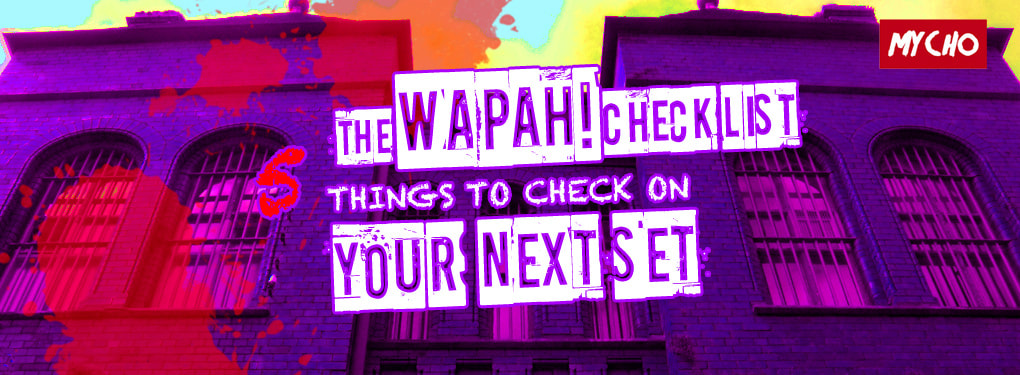
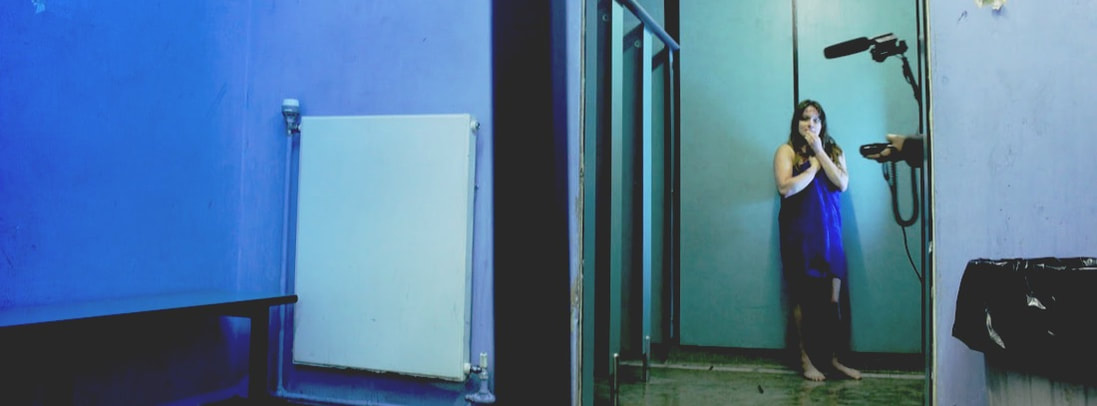
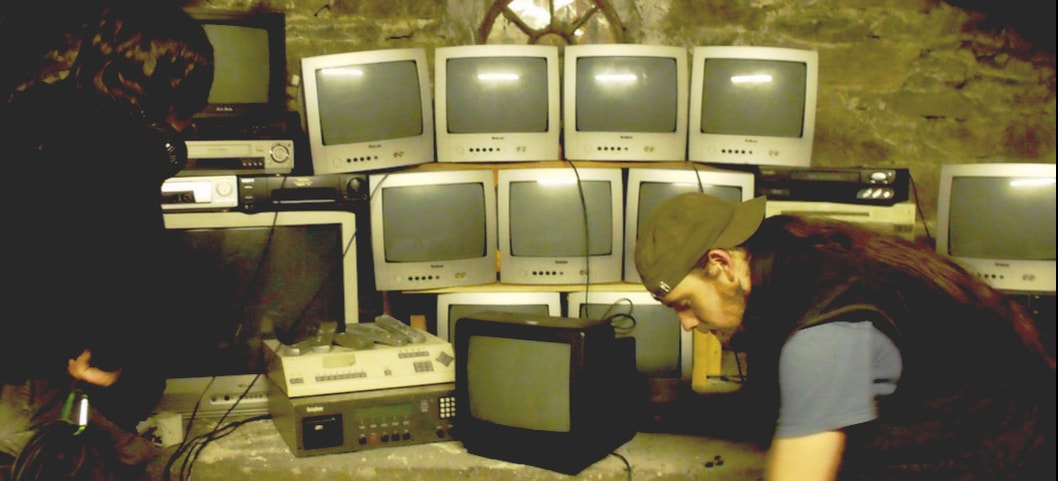
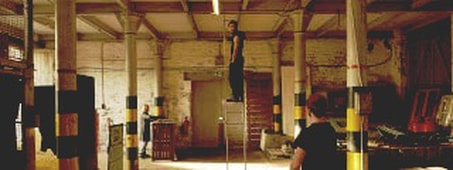

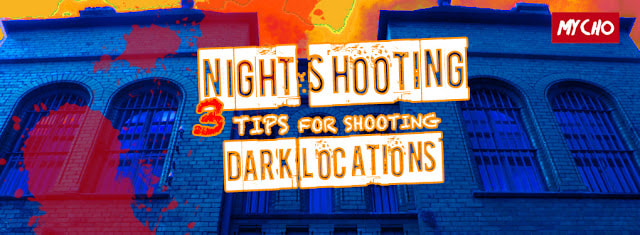
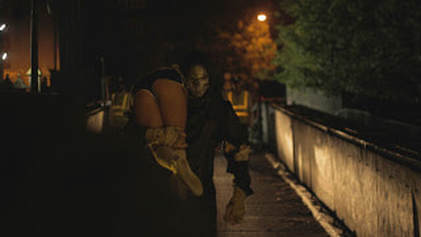
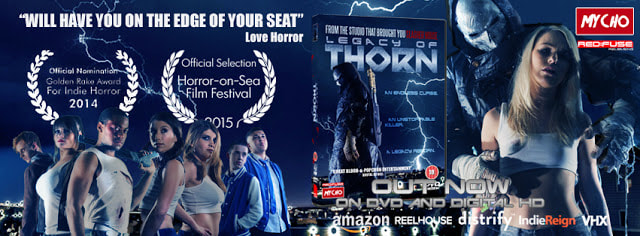
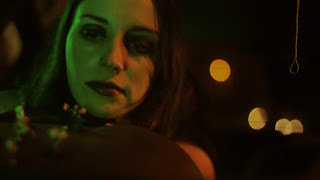
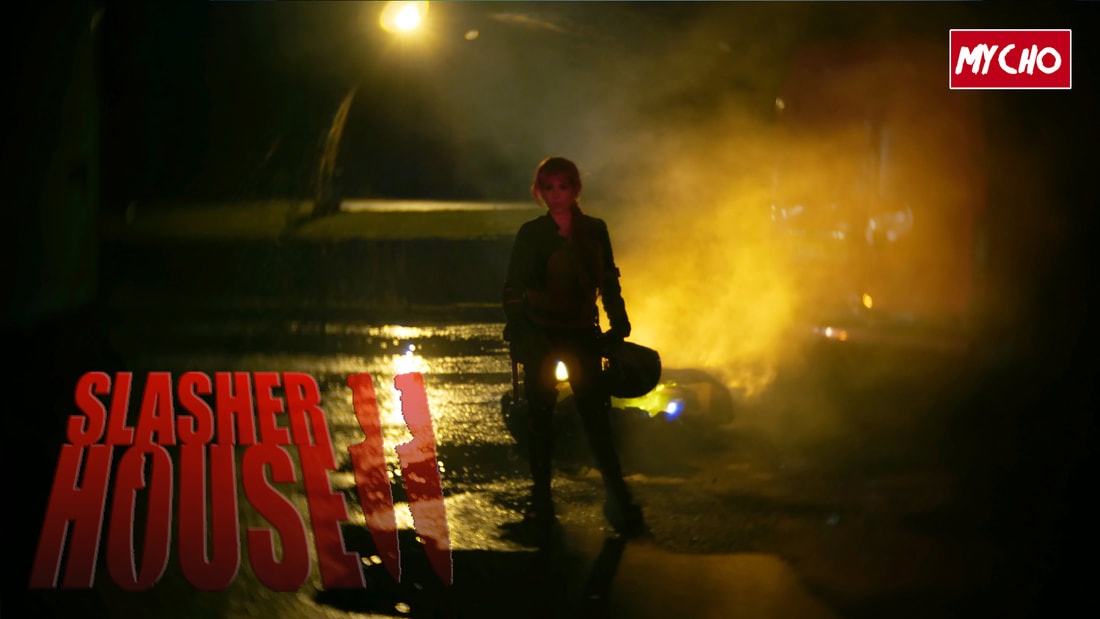
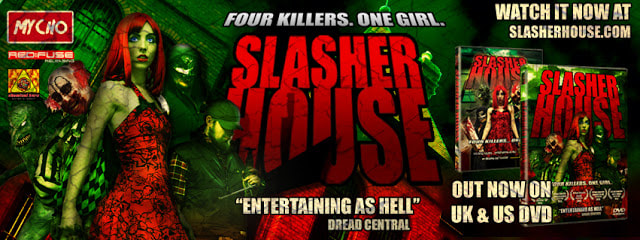
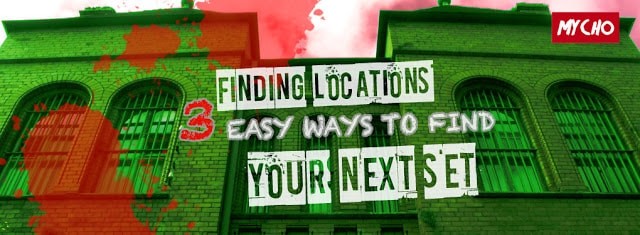
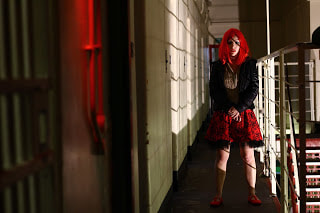
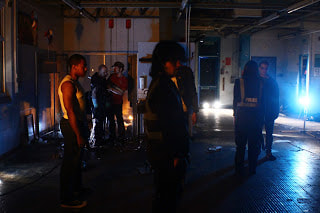
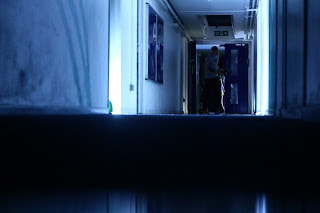
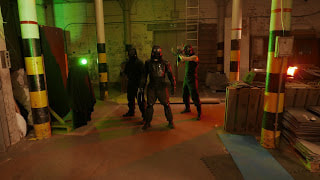
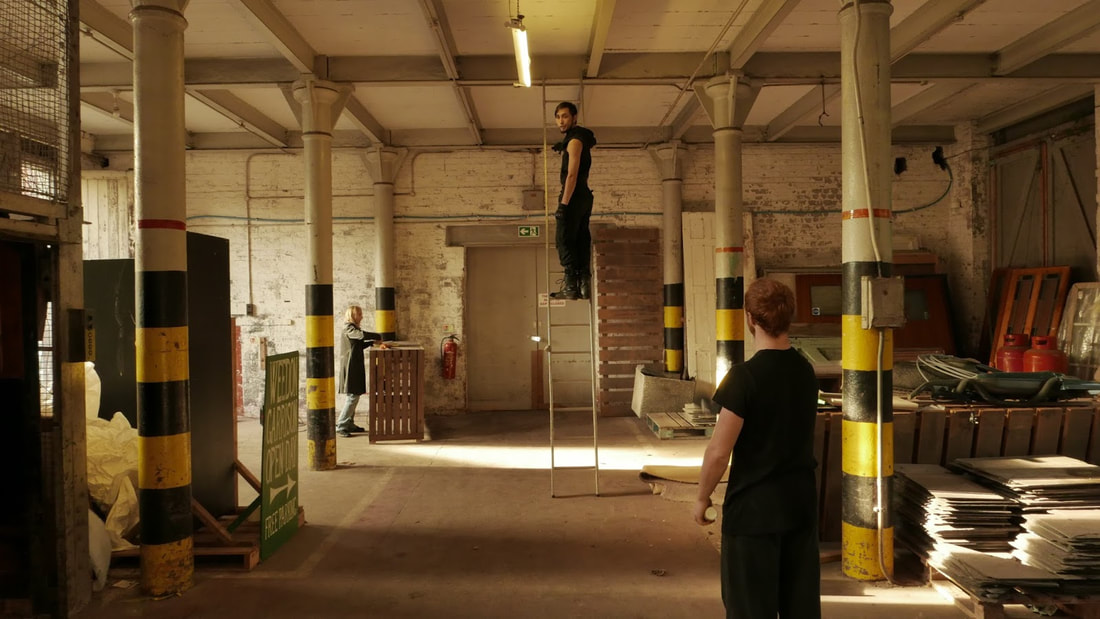
 RSS Feed
RSS Feed
